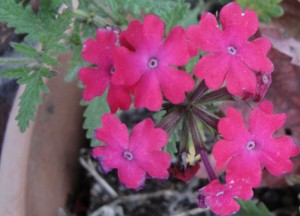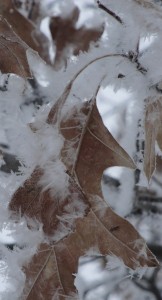13 Best Garden Tips of 2013, Part 2
We had too many tips to confine this post to just one day. Here are six more of the 13 best garden tips of 2013. What did you learn over the year?
8) Beware of free plants. Martin Stern, the knowledgeable and creative proprietor of Squire House Gardens in Afton wrote an article in 2013, which we called “Too Much of a Green Thing.” It talked about that fine line between plants that are healthy and hardy, and those that are just too aggressive. Martin’s advice for home gardeners: Be wary anytime people offer you free plants. No matter how pretty, they may be inclined to spread.

9) Choose annuals that like the cold. Michelle Mero Reidel, photographer, Master Gardener and winter-sowing expert, wrote about 15 Frost-Friendly Annuals in our September/October Northern Gardener. She offered some wonderful suggestions of plants that can take the cold and will continue to bloom and look pretty well into the fall. Some of her picks: Verbena, calibrachoa and nemesia.
10) Consider hydroponic fertilizers for seed starting. Also in September/October, writer Meleah Maynard introduced us to David Nackerud, a Minneapolis gardener who starts 1,000 or more plants from seed each year. This guy knows a bit about seed starting! He recommends using fertilizers blended for hydroponic gardens on your seedlings. Brands he suggests include FloraGrow, FloraBloom and FloraMicro.
11) Make your own potting soil for great results. Susy Morris contributes photography to Northern Gardener from time to time and also blogs at Chiot’s Run. Susy is a do-it-yourself gal and makes her own potting soil. I tried her mixture of two parts peat moss, two parts vermiculite and one part worm castings in 2013 for seed starting and was stunned by how well my indoor seed-starting worked. Here’s a video in which Susy gives her recipe for a container potting soil, which is a variation on the recipe I used.

12) Plant oaks for winter interest. Nurseryman Leif Knecht has long advocated planting oaks for winter interest. Oaks tend to hold their leaves well into the winter, adding a russet dimension to an otherwise white and gray landscape. Check out the cover of our November/December issue to see how beautiful oaks can be.
13) Never stop learning. We learn this over and over. No matter how long you have gardened, how many experiences you’ve had or books you’ve read, there is always something new to learn. We hope 2014 will be a great year in your garden, one filled with joy, peace and the excitement of new discoveries.
What was your best garden lesson of 2013?
Happy New Year!
